Dubbo urban heat island amelioration project
Contact
Insight:
Climate sensitive urban design (CSUD) aims to mitigate high urban heat and adapt to extreme heat events through planning and landscape design alternatives that create attractive, sustainable, and thermally comfortable cities (Coutts et al., 2013).
The drivers
The Dubbo region is hot and projected to get hotter. The CBD, like many other precincts, is subject to the UHI effect. Dubbo Regional Council is committed to increasing the urban tree canopy, to mitigate heat and to adapt to climate change.
Reduce ambient summer temperatures by increasing shading to road and footpaths. Research shows increasing an urban forest canopy by as little as 20% can reduce ambient temperatures by 3–4ºC (McPherson, 1993). The CRCWSC’s TARGET model shows the expected ambient summer temperatures within Bultje Street before and after the tree planting.
Reduce the risk of heat exposure and related illnesses and mortality to vulnerable communities. Elderly people, particularly those over 75 years of age, disproportionally experience illness and deaths from heatwaves. Trees moderate the environmental parameters that influence human thermal comfort and heat stress through evapotranspiration and by providing shade (Berry et al., 2013, Middel et al., 2014).
Reduce the risk of UV exposure to users of the Bultje Street precinct by increasing canopy cover by 300% over 15 years. Providing shade can reduce overall exposure to UV radiation by up to 75% (Parsons et al., 1998).
Reduce heating and cooling energy costs to occupants of buildings along Bultje Street. Urban street trees are an important component of climate sensitive urban design, because they can reduce building energy requirements (Donovan & Butry, 2009). A Californian study showed one large tree with a canopy cover of 7 m² created annual cooling savings between 3–8% annual per dwelling (McPherson & Simpson, 2003). Tree planting can significantly reduce peak load energy demand, which can become critical during heatwaves.
Increase longevity of local road infrastructure. Shading by large canopied trees protects asphaltic surfaces from UV damage and can reduce pavement fatigue including cracking, rutting and shoving.
A 30-year trial in California found an unshaded segment of a road required six reseals over the trial period, compared with an identical shaded section (small canopy) that required only five reseals. A third section with a large canopy cover required only 2.5 reseals. Shade from the third section was estimated to save $US7.13 million over 30 years (McPherson & Muchnick, 2005).
Reduce and /or delay stormwater peak flows and nutrient loads. During large storm events, one large canopied tree can intercept between 190–380 L of rainfall (Xiao et al., 1998). It can slow the flow of water into the Macquarie River, reducing flash peak flows and erosion impacts. In addition, the trees have been planted within tree pits. These water sensitive urban design features capture stormwater, to passively water the tree and act as a biofilter to remove nutrients (phosphorus and nitrogen) preventing discharge to the Macquarie River.
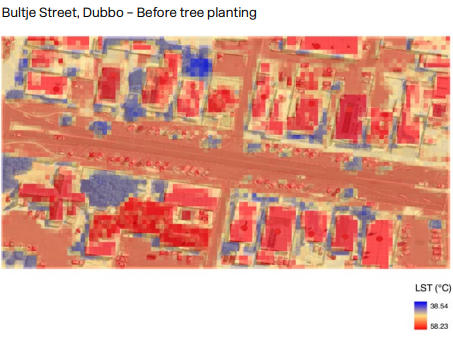
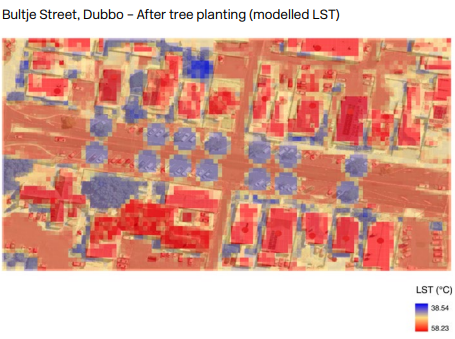
Project stats
Location
Dubbo, New South Wales
Dates
January 2019
Participants
- Dubbo Regional Council
- NSW Government - Office of Environment & Heritage
- Splash Network
- Local Government NSW
Contact
The outcomes
 Cities providing ecosystem services
Cities providing ecosystem services

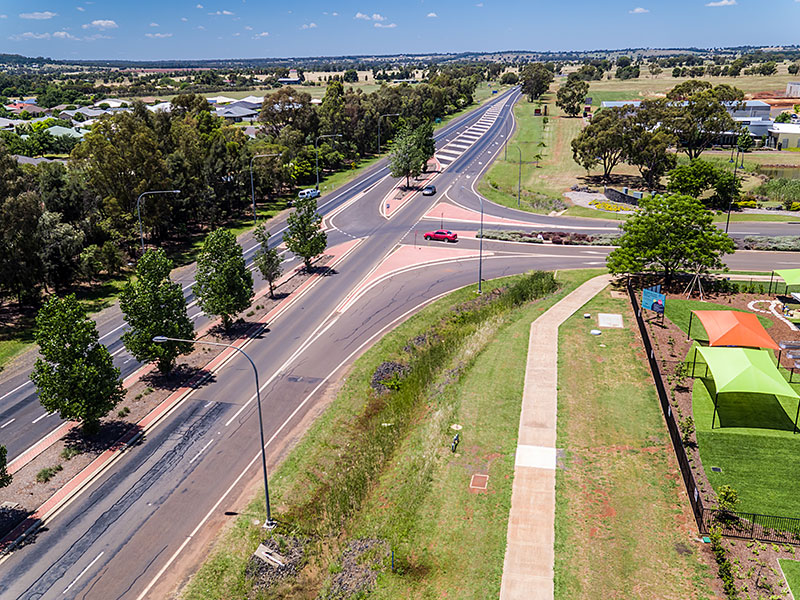
Interested in this solution?
We partner with small and large companies, government and industry in Australia and around the world.
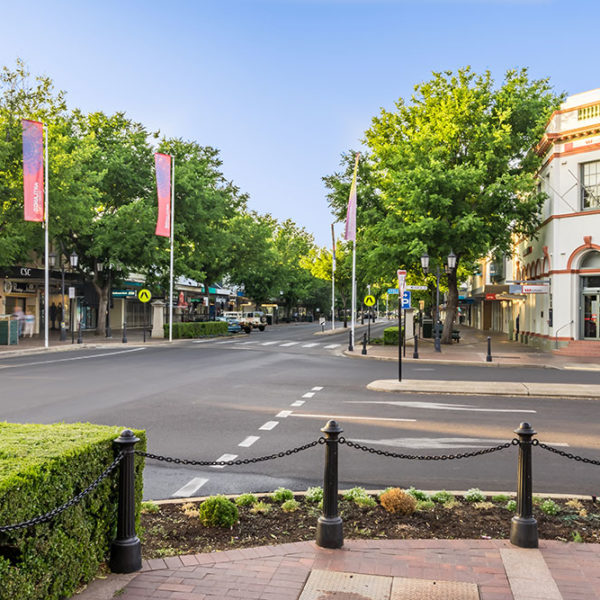
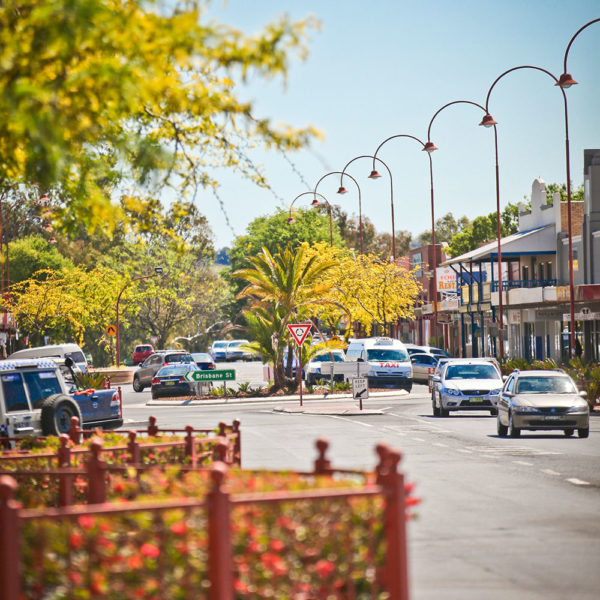
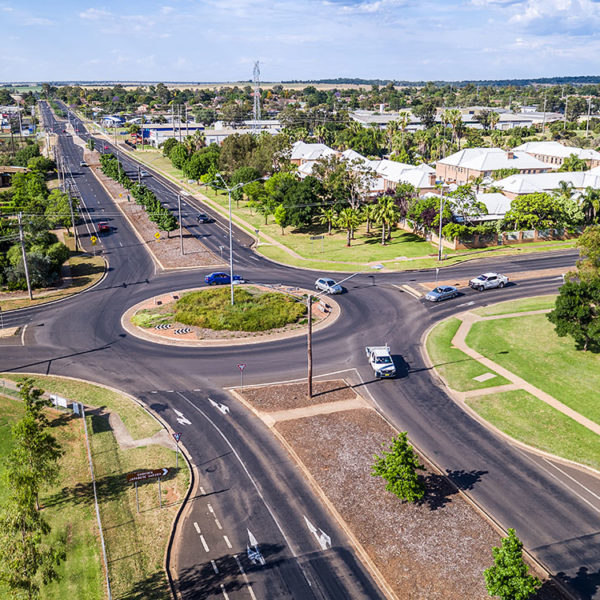
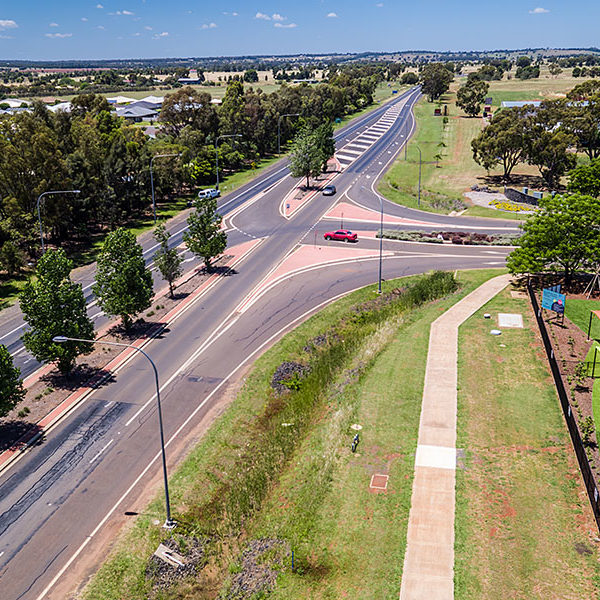
Comments